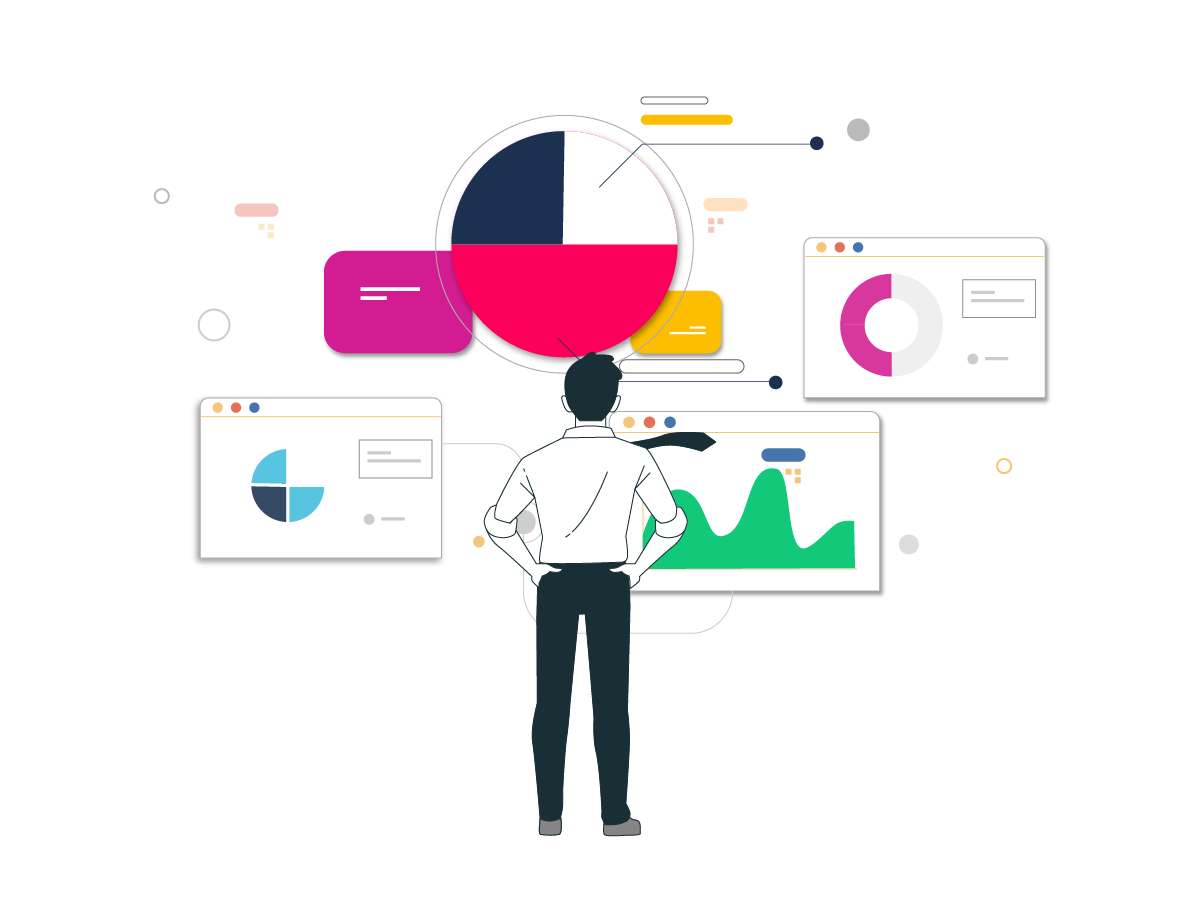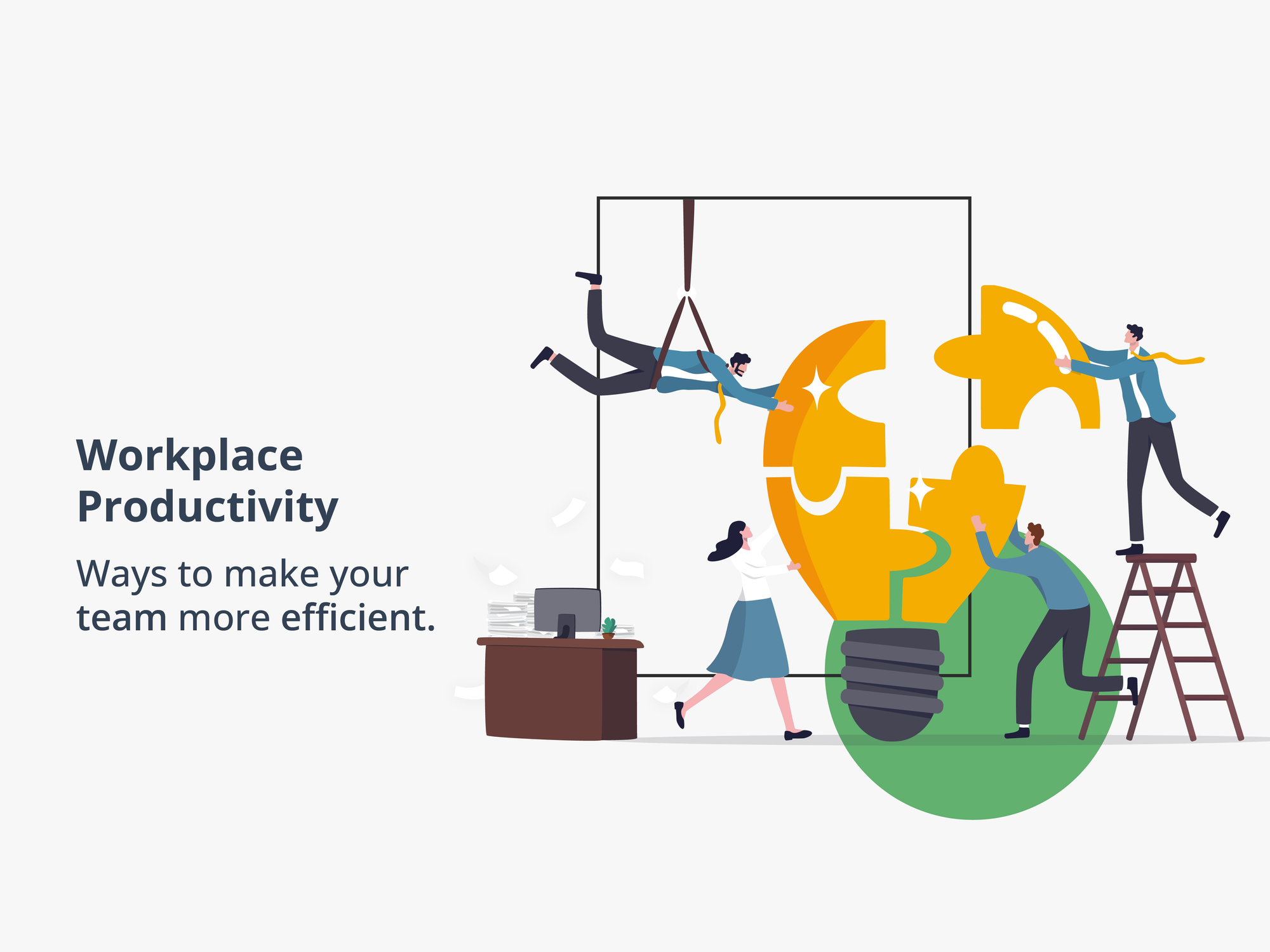There is no doubt, we are in the 21st century, and digital transformation has brought a specific strategic interest: Data.
“Without data, you’re just another person with an opinion.”
– W. Edwards
Nowadays, companies seek to have data, more and more, about the users who visit their website and their networks to convert them into customers. But they also need the data to make decisions, to know their customers, and always offer them a plus advantage that makes them loyal. Not surprisingly, competition is fierce in each sector globally.
So… What does it mean for a company to be “data-driven” and what is data-driven decision?
Being a “data-driven company” means digitizing and updating the company culture to opt for decision-making based on the analysis of the information offered by the data since these decisions are more objective, faster, and optimal.
The data revolution is here, and it’s just the beginning… but how does it benefit the decision-making process in organizations? We will discover it for you below.
What is data-driven decision making?
Data-driven decision-making is defined as the use of facts, metrics, and data to guide strategic business decisions that align with a company’s goals, objectives, and initiatives. Modern analytics tools such as interactive dashboards, work management platforms, and OKR tools help people overcome prejudice and make the best management decisions aligned to business strategies.
It is often referred as DDDM or information-driven decision making. It pulls together historical information to analyze trends and make better decisions for the future relative to what worked in the past, rather than making decisions based on gut feeling, opinion, or experience.
Data-driven decision making for business
Data is one of the most valuable assets for every organization. It is a gold mine and a very strategic and invaluable resource that has the potential to transform the world, improve the way we live, grow a business, and enable better, faster, and cost-effective business processes. Unlike traditional companies, data-driven companies do not scale linearly, and one of the reasons giant companies like Google and Amazon always experience exponential growth is because their business models are fundamentally built around data-based decision making.
According to PwC, data-driven organizations can outperform their competitors by 6% in profitability and 5% in productivity.
Another study also reveals that organizations who enforce data-driven decision are 162% more likely to exceed their revenue targets and 58% more likely to exceed their revenue targets than non-data-driven organizations.
81% of organizations also agree that data should be at the heart of all business decision-making.
Before getting carried away by the above mind-blowing numbers, one crucial thing to remember is that data are “just like untapped gold” in its raw form and may not be very informative or valuable right away. Thus, to get the best out of data, the company needs to collect the appropriate data and transform it into a reusable format. That said, here are some key reasons why every organization should start using their data-based decision making effectively –
- Helps you understand customer behavior and improve their experience
We live in a world where products and/or services are countless, and your current/potential customers have multiple options on where to invest. In addition, competition between product suppliers has never been more intense than before. But without data, it becomes quite challenging even to know who your customers are, if they like your products and services, or if your marketing strategies/campaigns are effective or not.
In contrast, you can easily achieve all this with data by implementing customer surveys, extracting and analyzing access data, purchase patterns, etc. In most cases, business profits are closely tied to data-driven decision, customer-centric, and strategic business processes and decisions. Once you collect customer data, you can analyze the data points and gain insights generated from customer feedback. It proves beneficial for customer service, cross-selling, up-selling services, and/or product innovation.
For instance, Netflix collects and analyzes customer data to see what types of movies and shows are popular. Afterward, the company uses the insights gained to buy similar titles, if subscribers would also like the new titles based on their previous preferences. The company used this data-driven strategy to increase its business value by more than $50 billion during the peak of the pandemic in 2020.
Amazon also leverages consumer data such as browsing history, customer purchases, and preferences to power its product recommendation engine. This data-driven decision approach generates around 35% of the company’s revenue. - Make better, informed business decisions
Data-driven decision is an essential aspect of every business that often involves multiple business executives, shareholders, and millions of dollars that companies cannot afford to lose. With the correct data in hand, the company won’t have to make significant business decisions based on hunches, guesses, wrong assumptions, or uncertain inputs – even in times of crisis. The data-driven decision making will provide the facts, trends, statistical numbers, and insights that the business needs to make informed and calculated decisions or understand performance.
Every department in an average organization generates (or can generate) valuable data that can be used to create a business strategy, drive growth and profitability. For example,
- Business executives need data to assess the most significant trends in their market, such as changes in production processes, logistics, or customer price sensitivity.
- Sales teams need sales performance data to understand and differentiate products that are selling well from products that are hard to sell.
- Marketing departments need market segmentation data to identify the most willing customers who want to buy from them and speed up the closing process.
- HR departments need personal data to manage talent better and build more effective global remote teams. – The list goes on!
- Business executives need data to assess the most significant trends in their market, such as changes in production processes, logistics, or customer price sensitivity.
- Assess business performance and understand employee engagement
In addition to helping, you understand customer behavior, improve brand awareness, and make better business decisions based on data, data analytics also allows you to measure business performance, build more reliable long-term hypotheses, and a very vibrant workforce.
The company can drill down into the data to understand whether it is meeting the most crucial business indicators or not. For example, most professional teams today employ a team of Data Analysts, Data Scientists, and Data Engineers to help support and improve company performance using data.
By analyzing business performance data, the company can also understand strategies that have worked and have not worked in the past, business data-driven decision and/or policies that have brought the most returns, business operations and costs that can be optimized, and other business drivers.
Data driven decision making process
Step 1
Start with your strategy
To avoid getting lost in the face of a large amount of data, outline your strategic objectives and avoid analyzing irrelevant information. For instance, this could be as specific as: are you going to look at sales or website performance? Or track business metrics? Ultimately, it will help you later in the process to choose key performance indicators (KPIs) and the right metrics that maximize efforts by taking all construction to a single path and prevent you from wasting team time and energy.
But, how to ensure that you are measuring the right KPIs?
KPIs are impactful metric that measures how businesses, departments, and individuals perform when it comes to tracking objectives and key results (OKRs).
Step 2
Use data backed KPIs
KPIs are the critical point of any performance management system. Some people prefer to work without KPIs, while others prefer to use KPIs from a long list of indicators found on the internet. Thus, it is recommended to invest time in finding specific performance indicators for your business challenges.
For instance, you want to decide more tangible and specific with KPIs. Then, think and ask yourself these questions –
- How will you track execution progress (trend indicators)?
- How will you validate the results achieved?
- When do you plan to achieve these results? (Setting goals of values)
Step 3
View the progress
It is easier to track trends and anomalies when you can visualize the data on a dashboard. Thus, our scorecard can put the performance data for trend and result indicators on the same chart. In this sense, you can visualize the data and roadblocks and take your data one step closer to strategic challenges.
Step 4
Turn insights into action
Formulate an action plan based on the current understanding of the situation. It is more important to formulate all the details behind the decision. This approach makes it easier for new team members to join the team, align decisions across the organization, and analyze results.
Step 5
Analyze the result
Now, it’s time to analyze the results. The final performance data is not as important as the work your team did along the way. What’s more critical is to analyze the deep reasons for failure/success and suggest strategic improvements.
To Conclude
The world has changed, and there is no longer room to be guided only by intuition. Using data-driven decision is guaranteed to choose the best path. Amid this digital age, the generation of data is enormous, and, in the same way, the possibilities of use are endless.




